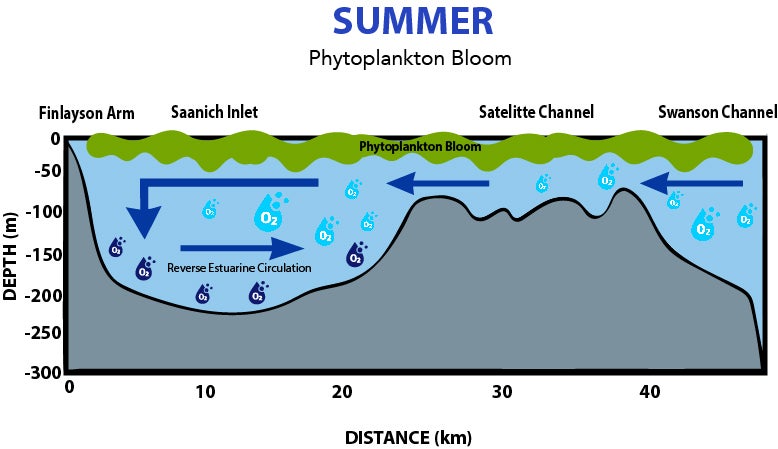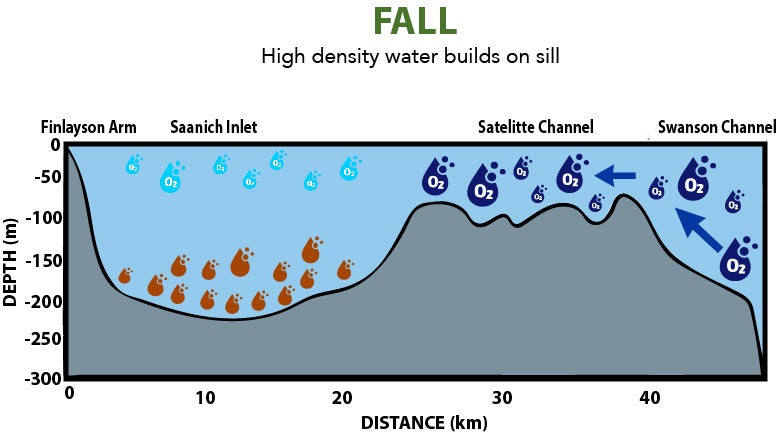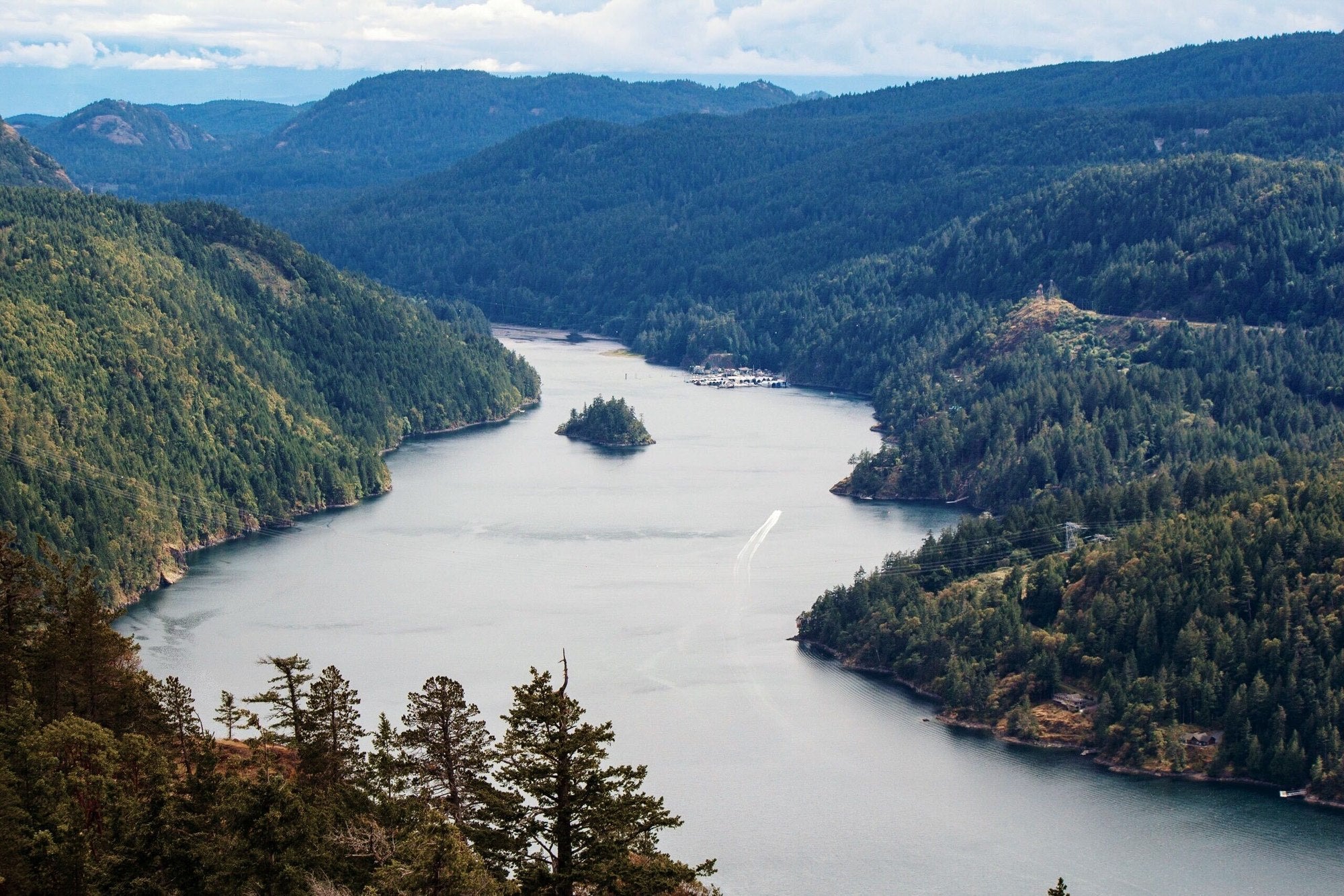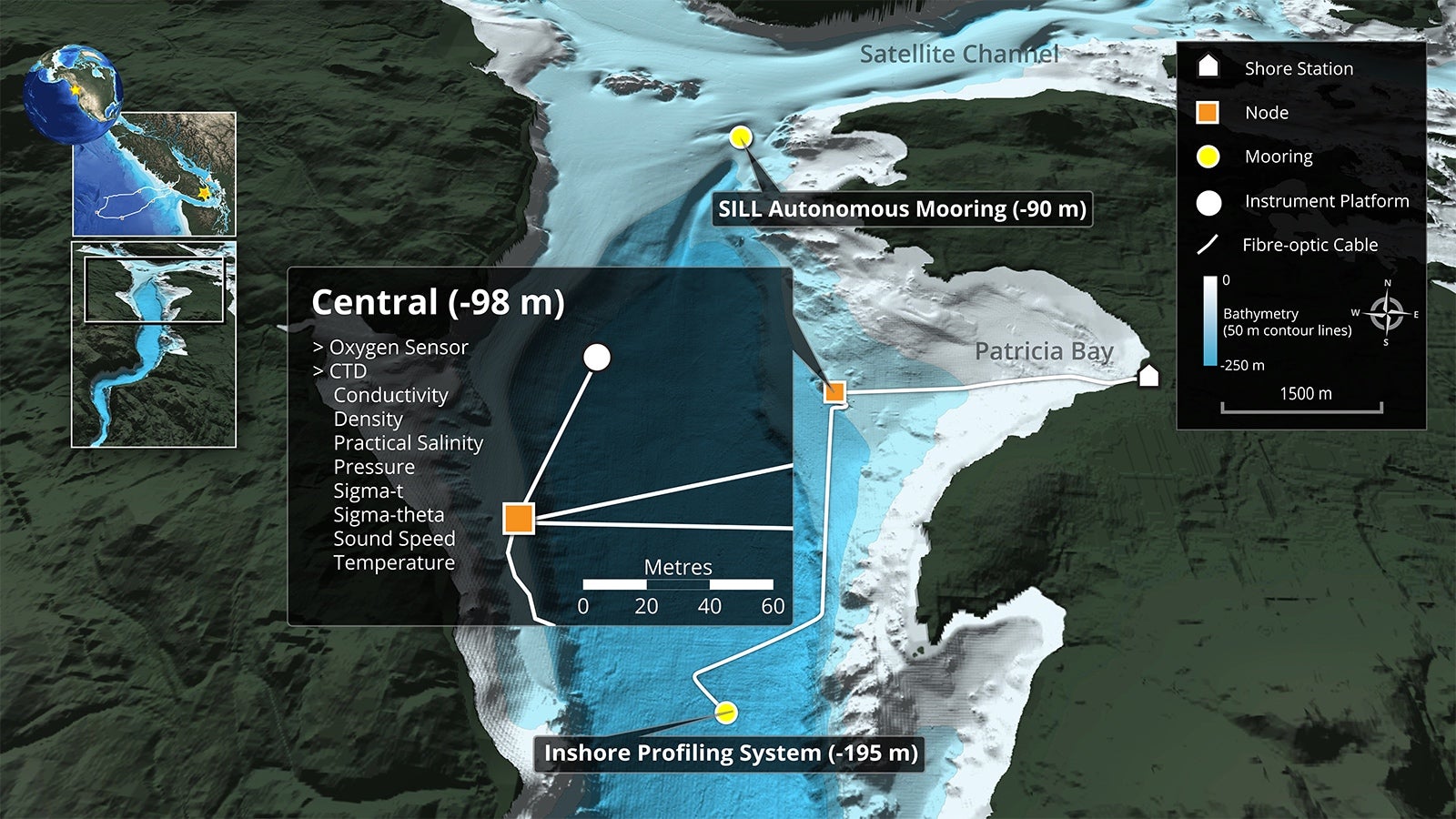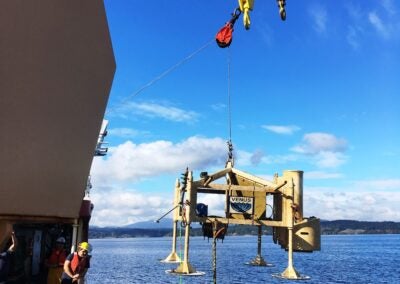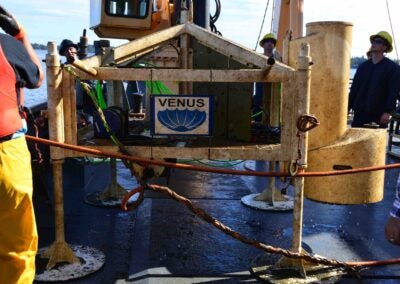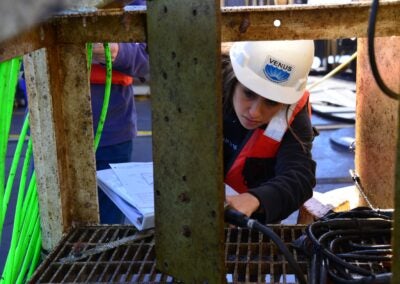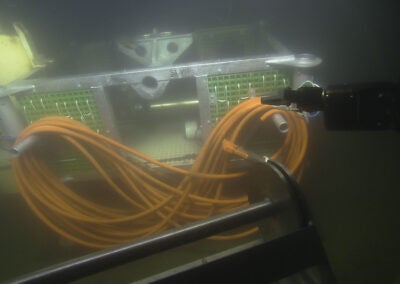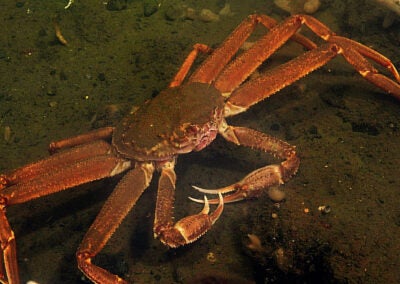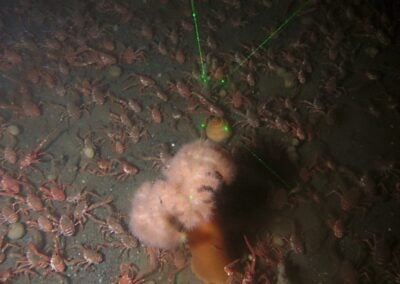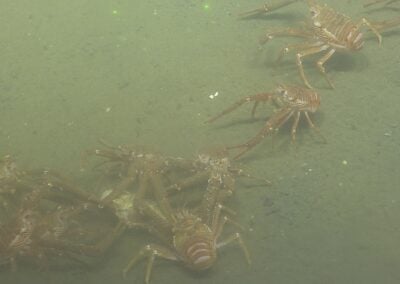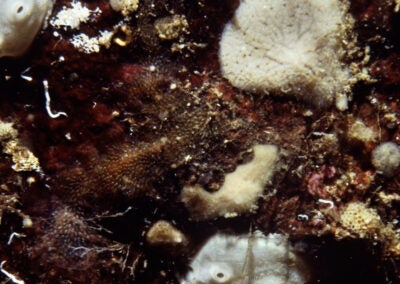Annual Cycle of Hypoxia at Saanich Inlet
In the fall, oxygen in the Saanich Inlet bottom water is restored through deep-water renewal events. For a deep-water renewal event to occur, high density water needs to make it up over the shallow sill and sink down to the bottom of Saanich Inlet. The high density water needed for these events comes from the salty, deep-ocean water upwelled off the coast that comes up through the Straits of Juan de Fuca. This salty water builds up on the sill during the fall until it reaches a critical mass and boluses of the water move across the sill and into the deep basin of the inlet. These dense, oxygenated waters displace the hypoxic/anoxic waters upward through the water column. The exact timing, intensity and duration of depletion and renewal phases vary between years, but seasonally they predictably occur each year.
The VENUS array in Saanich Inlet captures this annual oxygen cycle. As the array is located at approximately 100m depth, hypoxia/anoxia at the Saanich Inlet node results from the deep, low oxygen water being displaced upwards from the deeper portions of the inlet.
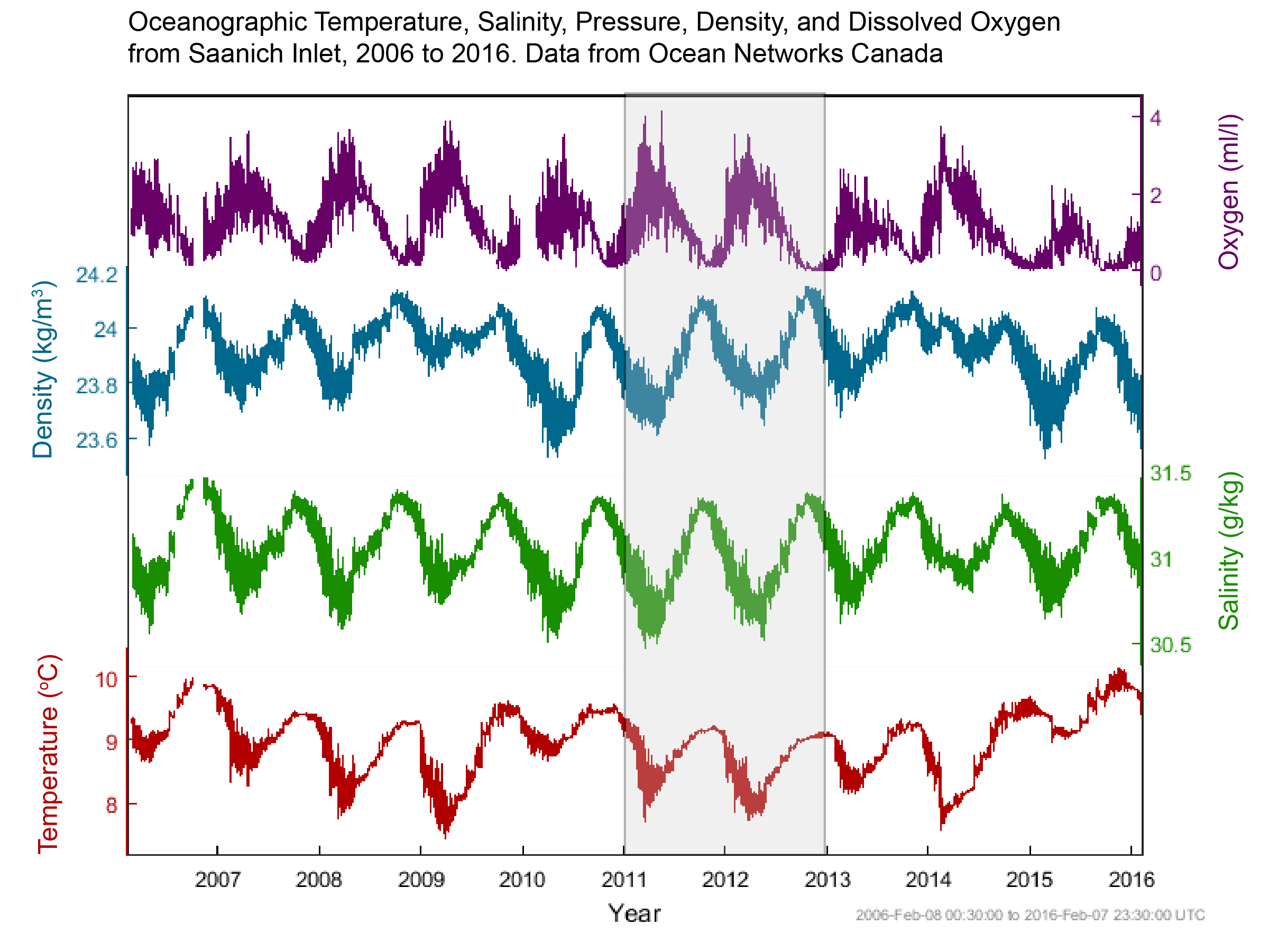
High Dive into the Data
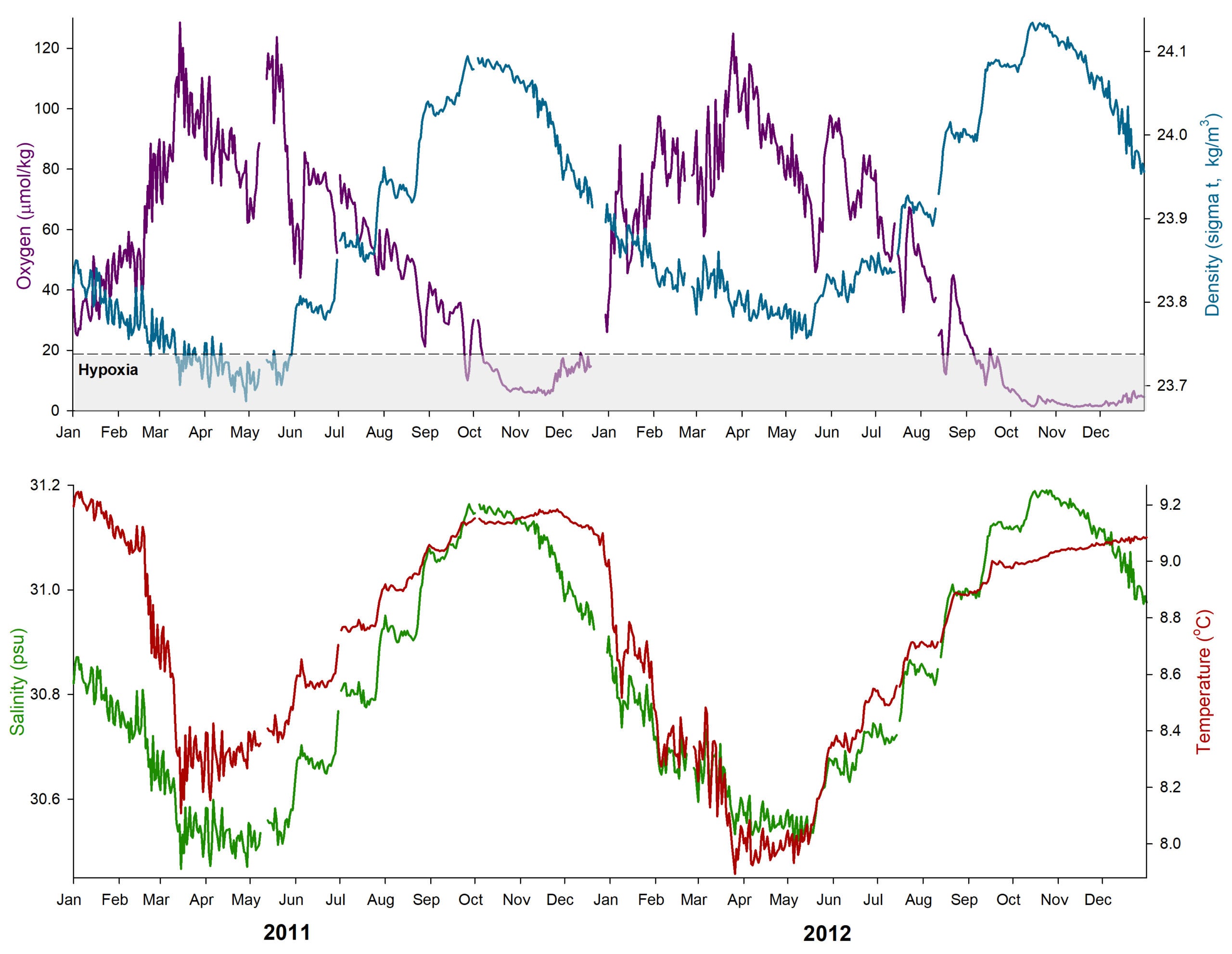
How were the data collected?
- Cabled Observatory: ONC VENUS Observatory
- Location: Saanich Inlet, Patricia Bay
- Lat/Lon: 48.6513N, 123.4863W
- Oceanographic Tool: VENUS Instrument Platform
The ONC VENUS Observatory is the world’s first complex, cabled seafloor observatory. Data began streaming live from instruments deployed on the seafloor to computers around the world in February 2006. This cabled array includes and instrument platform deployed at approximately 100m depth in Saanich Inlet. On the instrument platform is a suite of sensors including a CTD (conductivity, temperature and depth sensor) and an oxygen sensor. These sensors collected data continuously at 1-minute intervals, 24 hours a day, 7 days a week.
Multimedia Resources
SAANICH INLET
Saanich Inlet is a 274 metre deep glacially carved fjord separated from the Salish Sea by a shallow sill that restricts water inflow, making it naturally low in oxygen. Credit: Ocean Networks Canada
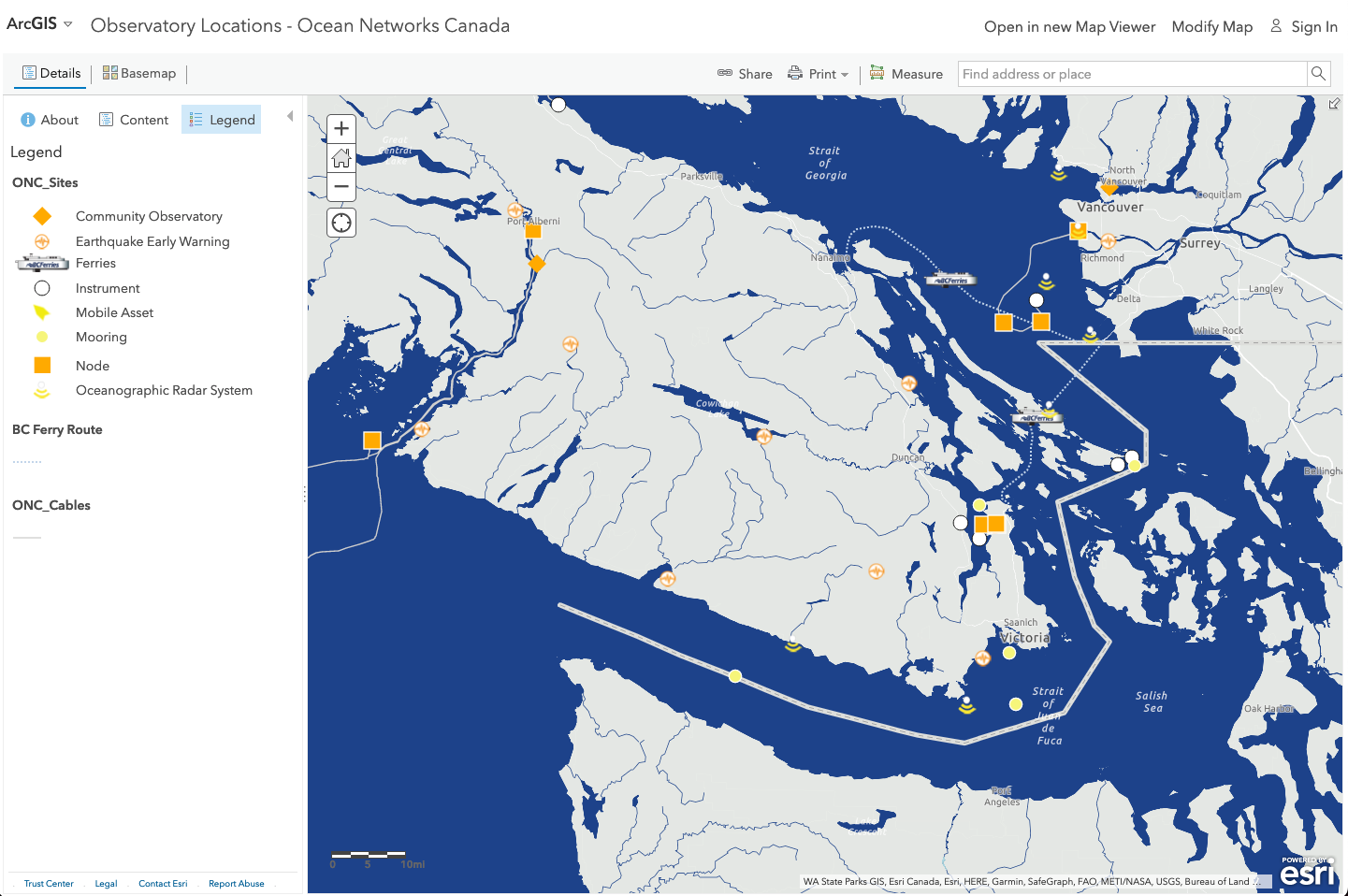
Interactive Map: ONC Observatory Locations
Video: Ocean Research in Saanich Inlet
Learn more about research conducted in Saanich Inlet in this video from the University of Victoria Check out the video on YouTube!
VIDEO: A Benthic Transect Across Hypoxia
A Benthic Transect Across Hypoxia from Jackson Chu. Check out the video on Vimeo. And read more about his research on the ONC Website.
VIDEO: Time lapse of a large squat lobster migration
For a brief period in the early Summer of 2012, a time lapse camera captured a massive migration of the squat lobster, Munida quadrispina, occurring over a ~1 month period. Video by Jackson Chu. Check out the video on YouTube
Photo Gallery
VIP recovery
The East instrument platform (VIP) recovered on deck. The first stop on this expedition tour was the Saanich Node site, and dive 1 was to recover the instrument platform at 95 m. This dive went relatively smoothly and the platform was on deck just before the lunch bell. Credit: ONC
VIP is covered in sediment and algae
The VENUS instrument platform (VIP) is covered in sediment and algae after being recovered. Credit: ONC
Meghan observes the instrument platform
Meghan observes the instrument platform after it was recovered from the Saanich Node site. Credit: ONC
Arriving at the new Saanich Inlet instrument platform at 93 m de
Arriving at the new Saanich Inlet instrument platform at 93 m depth. Credit: ONC/OET
Tanner Crab in Saanich Inlet
Tanner crab observed at a depth of 100 m in Saanich Inlet, October 2011. Credit: Ocean Networks Canada
Squat Lobster Congregation
For a week in early June 2012, the seafloor around the VENUS camera in Saanich Inlet (96m) was alive with squat lobsters. The reason was not apparent but it may relate to habitat compression as habitat conditions limit the galatheid crabs to a narrow zone at this time of year. Credit: Ocean Networks Canada
White Lady Sea Squirt
The white sea squirts in this image were recently observed in Saanich Inlet. This species was first described several years ago as Bathypera feminalba. The name means “White Lady” – reflecting the white colour and the location in Saanich Inlet where it was collected: White Lady Rocks. Credit: Ocean Networks Canada


